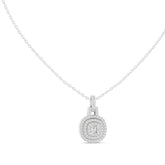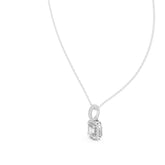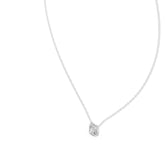Final Polish Process
The final polishing process is a crucial step in jewelry making that enhances the appearance and luster of the metal surface. It involves removing any imperfections, scratches, or blemishes to achieve a smooth and shiny finish. Here's an explanation of the typical final polishing process:
-
Preparation: Before starting the polishing process, the jewelry piece is thoroughly cleaned to remove any dirt, debris, or residues. This ensures that the polishing process is effective and does not cause further damage to the metal surface.
-
Selection of Polishing Tools: Different polishing tools and materials are used based on the type of metal being polished. Common tools include polishing cloths, buffs, brushes, and polishing compounds. Jewelers select the appropriate tools that match the metal type and the desired level of polishing.
-
Polishing Compound Application: Polishing compounds, also known as polishing rouge, are applied to the polishing tools. These compounds contain fine abrasive particles that help in smoothing out the metal surface. The specific polishing compound used depends on the metal type and the desired finish, such as high shine or a satin/matte finish.
-
Hand Polishing: In some cases, jewelers may use hand tools such as cloths or brushes to manually rub and polish the metal surfaces. They carefully move the polishing tool across the surface, applying consistent pressure and using circular or back-and-forth motions. This process helps remove scratches, oxidation, and other surface imperfections.
-
Machine Polishing: In larger-scale jewelry production, polishing machines with rotating brushes or buffs are commonly used. The jewelry piece is held against the rotating polishing tool, allowing the abrasives within the compound to gently remove imperfections and refine the surface. Different brushes or buffs may be used, depending on the metal type and the desired finish.
-
Polishing Intensity: The intensity and duration of the polishing process depend on the desired level of shine and the condition of the metal surface. Jewelers carefully monitor the progress to avoid over-polishing, which can result in the removal of too much material or altering the design details.
-
Intermediate Cleaning: Periodically, the jewelry piece is cleaned during the polishing process to remove any polishing residue and assess the progress. This allows the jeweler to make adjustments if needed and ensure that the desired finish is achieved.
-
Final Inspection: After the polishing process is complete, the jewelry piece undergoes a final inspection to ensure the desired level of shine and smoothness is achieved. Any remaining imperfections or marks are addressed, and further polishing or touch-ups are performed if necessary.
The final polishing process adds the finishing touch to the jewelry piece, enhancing its beauty and ensuring a high-quality appearance. It requires skill, precision, and attention to detail to achieve the desired level of shine while preserving the integrity of the design.






